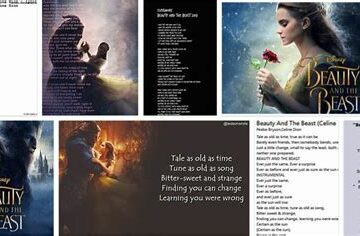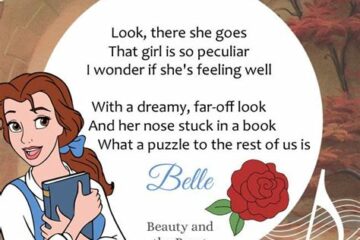Iconic Disney Characters That Defined An Era
Iconic Disney Characters That Defined An Era
Disney has an unparalleled ability to create characters that resonate with audiences of all ages, forging indelible connections that span generations. From classic animated films to contemporary blockbusters, these beloved figures have become cultural icons, shaping childhood memories and influencing societal trends along the way. In this article, we delve into the rich history of Disney character creation, exploring their origins and the profound impact they have on us. We’ll examine how these characters have evolved through the decades, the artistry behind their captivating designs, and their significance as symbols of nostalgia and joy. Join us on this nostalgic journey as we celebrate the magical world of Disney and the remarkable characters that have defined an era in animation history.
The Birth of Iconic Disney Characters in Animation History
The journey of Iconic Disney characters began in the early 20th century, with the creation of beloved figures that would soon become household names. The animation revolution was sparked by Walt Disney and his innovative team, who sought to push the boundaries of storytelling through animation. Mickey Mouse, introduced in 1928 in Steamboat Willie, marked a pivotal point in animation history. He was not only the first synchronized sound cartoon character, but also established the foundation for what would become Disney’s legacy.
Alongside Mickey, characters like Minnie Mouse, Donald Duck, and Goofy emerged, each bringing unique personalities that audiences could relate to. These characters were designed with distinct traits and quirks, allowing them to resonate with viewers of all ages. The success of these early figures laid the groundwork for the extensive Disney character universe, which would continue to evolve over the decades.
Disney’s approach to character development emphasized empathy and relatability, creating an emotional connection with audiences. This was notably seen in 1937 with the release of Snow White and the Seven Dwarfs, the first-ever full-length animated feature film. Snow White and the dwarfs captured hearts worldwide, showcasing how animation could convey complex human emotions and narratives. The success of such films demonstrated that Iconic Disney characters could transcend mere entertainment, becoming symbols of joy, resilience, and courage.
As Disney ventured into the mid-20th century, new characters continued to reflect societal changes and cultural shifts. The introduction of characters like Bambi and Cinderella not only offered entertainment but also imparted moral lessons and values crucial to childhood development. Through these stories, Disney solidified its role in shaping the imagination of children while also emphasizing the importance of love, friendship, and bravery.
Overall, the birth of Iconic Disney characters during this era marked the beginning of a cultural phenomenon that would leave an indelible mark on animation and storytelling as a whole.
How Iconic Disney Characters Shaped Childhood Memories Across Generations
The impact of iconic Disney characters on childhood memories is a phenomenon that resonates with individuals from various age groups. For many, these characters represent not just animated figures but treasured companions that shaped their formative years. From the adventures of Mickey Mouse to the enchanting journeys with princesses like Cinderella and Ariel, the stories woven around these characters have a lasting imprint on young minds.
Disney characters often serve as vessels through which children explore themes of friendship, bravery, and resilience. The enchanting narratives invite children to see reflections of themselves, fostering emotional connections that can last a lifetime. For instance, when children cheer for Simba in The Lion King, they are not just watching a story unfold; they are experiencing growth, loss, and eventual triumph that parallels their own challenges.
Moreover, the engaging marketing strategies and memorable themes associated with iconic Disney characters create a sense of nostalgia that parents carry into adulthood. This often leads them to introduce their own children to these timeless tales, establishing a cycle of shared experiences and cherished memories across generations. The Disney movies, merchandise, and theme park experiences become a rite of passage, solidifying these characters as integral parts of their upbringing.
In essence, the power of iconic Disney characters lies not just in their visual appeal or the stories they tell but in their ability to foster connections, both within families and to broader cultural narratives. As these characters continue to evolve, their fundamental ability to affect emotional growth and create lasting memories remains unchanged, making them truly iconic across generations.
The Cultural Impact of Iconic Disney Characters on Society
Iconic Disney characters have transcended the boundaries of animation and storytelling to become powerful cultural symbols. They have not only entertained millions but also influenced fashion, language, and even societal norms. Characters like Mickey Mouse, Cinderella, and Simba have become ingrained in the global culture, often representing values such as friendship, perseverance, and hope.
One of the most significant impacts of iconic Disney characters is their ability to foster a sense of belonging and unity among diverse groups of people. For instance, during the COVID-19 pandemic, characters like Elsa and Anna from Frozen provided comfort to families as they navigated difficult times together, showcasing how iconic Disney figures can serve as emotional touchstones in moments of crisis.
Moreover, the character-driven narratives often reflect progressive values, such as gender equality and environmental awareness. Films like Moana and Zootopia go beyond mere entertainment; they challenge stereotypes and inspire young audiences to be more inclusive and open-minded.
Disney’s influence extends to merchandise and theme parks, where iconic Disney characters play central roles in shaping consumer behavior and cultural experiences. The sight of Mickey Mouse ears at Disneyland or merchandise featuring various characters highlights the enduring popularity and cultural relevance of these figures.
The cultural impact of iconic Disney characters is undeniable. They not only provide joy and nostalgia but also serve as catalysts for social change and unity. As new iconic Disney characters emerge, the legacy of those that have come before continues to shape societal values and aspirations, ensuring their relevance for generations to come.
Exploring Iconic Disney Characters: Designs That Captured Hearts
From the very first sketches to the vibrant animations that fill our screens today, the iconic Disney characters have always been designed with meticulous care and creativity. Each character represents a unique blend of artistic vision that not only defines their personality but also resonates deeply with audiences across the globe.
The design process of these characters often begins with extensive brainstorming sessions where artists explore various forms, colors, and characteristics. For example, consider Mickey Mouse, whose original design was simple yet effective—large circular ears, a rounded body, and a cheerful expression. This straightforward yet memorable design has made him not just a iconic Disney character but also an enduring symbol of the Disney brand itself.
Another remarkable example is Ariel from The Little Mermaid, whose flowing red hair and vibrant tail were designed to capture the allure and freedom of the ocean. Her character design reflected not just her aquatic nature but also her adventurous spirit and desire for a different life, which resonated with many young viewers, ultimately making her an iconic Disney princess.
As technology evolved, the animation techniques and tools available to Disney artists allowed for even more creativity in character design. Characters like Elsa and Anna from Frozen were brought to life with intricate details, from their flowing gowns to the snowflakes that adorn their world, captivating audiences and contributing to their status as iconic Disney figures.
Moreover, the color palettes used in character designs also play a crucial role in defining iconic Disney characters. Bright and contrasting colors attract attention, while soft hues can evoke different emotions. For instance, the stark contrast between the cool tones of Elsa’s ice palace and the warm colors of Anna’s wardrobe reflects the essence of their relationship and their individual journeys.
In essence, every detail matters in the animation world, and Disney characters are no exception. By continually evolving their designs while staying true to their roots, Disney has succeeded in creating iconic Disney characters who not only capture our hearts but also leave a lasting impression on popular culture.
The Evolution of Iconic Disney Characters Over the Decades
The journey of iconic Disney characters is a remarkable tale of creativity and cultural adaptation. From their inception in the early 20th century to their current representations in modern media, these characters have undergone significant evolution influenced by societal changes, technological advancements, and shifts in audience expectations.
In the 1920s and 30s, the birth of characters like Mickey Mouse marked the beginning of a new era in animation. These characters were simple but captivating, appealing to a wide audience with their charm and humor. As techniques in animation advanced, the designs of these characters became more intricate, reflecting the times and better expressing emotions. This evolution continued into the 1950s and 60s as Disney introduced beloved characters in feature-length films, such as Cinderella and Bambi.
By the 1990s, the iconic Disney characters began to diversify. New characters like Aladdin and Mulan were not only entertaining but also embraced different cultures and backgrounds, showcasing a more inclusive representation that resonated with a global audience. This shift not only reflected the changing times but also expanded the appeal of Disney films to a broader demographic.
In recent years, the evolution of Disney characters has taken a more progressive turn. Contemporary characters such as Elsa from Frozen and Moana from Moana break away from traditional narratives, showcasing themes of empowerment, independence, and self-discovery. This shift indicates a growing recognition of the need for strong, relatable characters that inspire today’s youth.
The technological advancements in animation have also played a crucial role in the evolution of iconic Disney characters. With the introduction of CGI and advanced animation techniques, characters can now be portrayed with more depth than ever before. This evolution not only enhances the visual storytelling but also redefines what audiences expect from their favorite Disney characters.
The evolution of iconic Disney characters over the decades illustrates a dynamic relationship between cultural context and creative innovation. As they continue to evolve, these characters remain firmly embedded in the hearts of audiences worldwide, proving that magic comes in many forms and stories are ever-changing.
Top 10 Disney Characters You Didn’t Know About
December 30, 2024A Deep Dive Into Disney Princesses And Their Stories
December 29, 2024The Meaning Behind Beauty And Beast Lyrics
December 29, 2024Why Beauty And The Beast Is A Timeless Disney Classic
December 29, 2024The Role Of Disney Princesses In Modern Culture
December 29, 2024Exploring The Themes In Beauty And The Beast Lyrics
December 28, 2024
Leave a reply Cancel reply
Recommended
-
Beauty And The Beast Tale As Old As Time Lyrics
August 20, 2023 -
Bonjour Lyrics Beauty And The Beast
August 24, 2023 -
Beauty And The Beast Bonjour Song Lyrics
August 24, 2023









